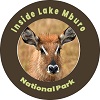Kizimbi Swamp is one of the Marshlands in Western Uganda and sits within the Ankole-Masaka Ranching Corridor with its main tributaries being dams in the ranching scheme. This pristine and verdant swamp feeds into Lake Mburo, one of the 14 lakes that form part of the 50-kilometer-long wetland system that is linked by a swamp.

This swamp is in an area of elevation of 1,261 meters above sea level, between the villages of Kaianja and Nombi. There are a number of bird species around the swamp, although its primary advantage is cattle watering within the swamp by communities of Kiribwa, Kyakategyere, and Byembogo.
Kizimbi swamp is also a natural habitat for several fish species, especially mudfish, and catfish. In terms of accessibility, the swamp is only 1 kilometer from Lake Mburo National Park boundary hence making it ideal for travelers to stop by for birding tours, community tours centered on cattle rearing, beekeeping, and visits to traditional healers who take visitors through the important medicinal plants in the area.
More about Lake Mburo National Park and Kizimbi swamp
The 37,000-hectare Lake Mburo National Park is a stunning natural gem in western Uganda. This is close to the Mbarara-Masaka highway that connects the capital to the other national parks in western and southwestern Uganda. These include Queen Elizabeth, Rwenzori Mountains, Mgahinga Gorilla, and Bwindi Impenetrable National Parks.
With its size, it is so far from the smallest of the country’s savannah national parks and is a haven to over 70 mammal species. These include hippos, reedbucks, topis, cape buffaloes, Burchell’s zebras, giant elands, Oribis, olive baboons, Defassa waterbucks, spotted hyenas, and Rothschild’s giraffes among others. There well over 350 bird species that include shoebill storks, African fish eagles, Papyrus yellow warblers, African finfoot, Kingfishers and Pelicans among others.
Lake Mburo National Park is 20% covered by lakes and wetland habitats. There are five lakes here, most of which lie within the protected area’s borders. Also, there is an open savannah ecosystem that supports a significant population of cape buffaloes, hippos, and warthogs as well as woodlands. The Park’s western side is dotted with rocky ridges as well as forested gorges as well as papyrus swamps and narrow areas of verdant riparian woodland along the shores of the lakes.
Besides Kizimbi swamp, there are other swamps in the area that include Mazinga Swamp. Lots of activities are available in Lake Mburo National Park and they include safari game drives through the sweeping savannah plains dotted with woodlands and rock ridges. There are bush and forest walks, bird watching adventures, boat cruises on Lake Mburo, horseback rides, cycling tours, cultural experiences, to mention but a few.
Getting to Lake Mburo National Park
There are two main means of getting to Lake Mburo National Park, in western Uganda. The first and commonly used is the 230-kilometer distance/4-hour drive from Kampala city. This involves enjoying views along the way and en-route stops for Equator experiences, photography and snacking.
The most convenient way is taking a 30-minute flight from Entebbe to Mbarara airstrip, followed by a one-hour drive to the national park.
